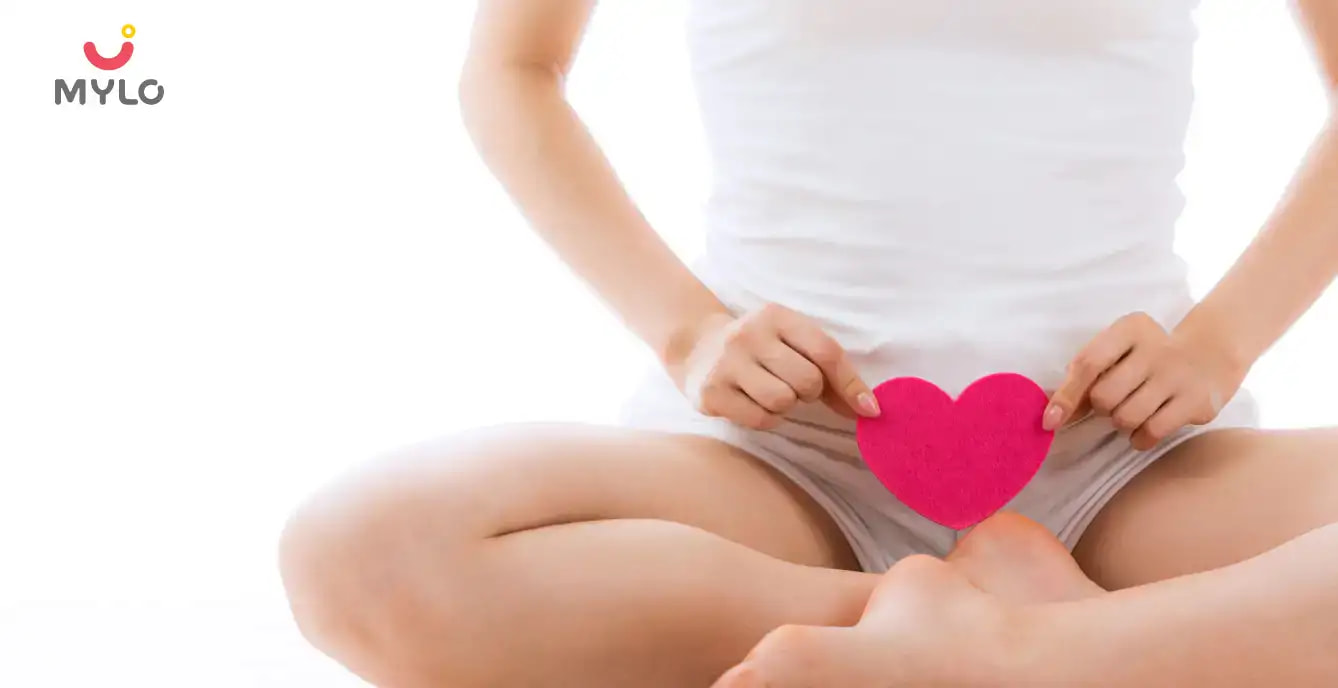Home

Tips For Normal Delivery

Vaginal Delivery: Meaning, Types & Advantages
In this Article

Tips For Normal Delivery
Vaginal Delivery: Meaning, Types & Advantages
Updated on 3 November 2023
Giving birth is a unique experience that every mother goes through. Each delivery has challenges and is unique to the mother and the newborn. Labour and delivery are life-changing and leave a lasting impact on women. Normal or vaginal delivery is the most common form of delivering a child. It is considered the safest form of delivering a baby if the mother is not undergoing any health complications or risks.
What is a vaginal birth delivery?
A vaginal birth involves the uterus contracting and opening the cervix to push the baby through the birth canal or the vagina. All mammals give birth through vaginal delivery. During a vaginal delivery, women experience a lot of pain and discomfort; however, as soon as the baby's head emerges from the vagina, the pain starts relieving.
How common are vaginal deliveries?
Vaginal deliveries are very common; according to the Centers for Disease Control and Prevention (CDC), in 2020 alone, the number of vaginal deliveries surpassed two million. Worldwide, more than 80% of deliveries are vaginal deliveries. Most doctors recommend that women go in for vaginal or natural deliveries unless there are health risks associated, in which case a doctor may suggest a C-section.
Choosing a vaginal delivery
Women have a choice regarding their delivery procedure. They can choose how they want to give birth; while a baby coming out of a vagina or a vaginal delivery is the most common, there are some other types of deliveries as well. These include C-sections, vaginal birth post-cesarean delivery, and vacuum extraction.
Early stages of labour
During the early stages of labour, the amniotic sac, which is the fluid-filled membrane that envelopes the baby, ruptures. Typically, this is referred to as the 'water breaking' and happens just before birth. In some cases, the amniotic sac may not rupture easily. The contractions happen next; this refers to the uterus tightening and releasing and creating a pattern of motions that ultimately prepare and allow the body to push the baby out from the cervix. The cervix is the part of the body that opens up into the vagina; during childbirth, it dilates to allow the baby to push through the vagina.
Delivery and labour
The cervix opens up or dilates to the point that it reaches about 10 cm so the baby can easily pass through the canal and out from the vagina. The skin and muscles around the vagina begin to stretch as the baby enters it, ready to be pushed out. Many mothers might feel a burning sensation at this point because the tissues around the vaginal area stretch to let the baby's head pass through. Depending on the situation, the doctor may suggest an episiotomy, wherein the skin and muscles lose sensation, so the mother doesn't feel tightness, stretching, or burning sensation while delivering.
During labour, one may experience pain and other symptoms
During a vaginal birth delivery, it is normal for expecting mothers to experience pain and other symptoms like pressure. As one pushes, the pressure begins to ease. This is because the baby is also pushing on the nerves in the vagina to come out. As the baby comes out, the pressure will release, and the woman will feel better.
What are the types of vaginal delivery?
There are two types of vaginal birth delivery – unassisted vaginal birth delivery or normal delivery (vaginal) and assisted vaginal birth delivery. The assisted form involves medication and other delivery procedures to ease pressure on the expecting mother. Depending on the health risks, it could also involve emergency procedures or medication.
What are the advantages of a vaginal delivery?
Most women prefer a vaginal birth delivery as it involves a shorter stay in the hospital. It also allows the body to heal naturally and faster than a C-section, where the mother might take some more time to recover from the procedure.
How long does it take to heal from vaginal delivery?
A vaginal birth delivery is a natural process; therefore, even though there is a recovery period, it occurs naturally and faster than other forms of delivery. The recovery period is also called the postpartum period, which takes about six to eight weeks. Some women, however, could take a few more months to recover, depending on their physical and mental health and well-being.
How long after vaginal delivery can one have sex?
Since vaginal birth delivery is a natural process, there is no suggested or required waiting period before a woman can have sex again. Most doctors ideally recommend that women wait about four to six weeks after delivery to have sex, irrespective of whether the process was assisted or unassisted. This allows a woman to heal properly and avoid any complications that may arise.
You may also like: https://mylofamily.com/article/normal-delivery-tips-149870?https://mylofamily.com/article/normal-delivery-tips-149870?
References
The Healthline Editorial Team on April 18, 2018.What to Expect During a Vaginal Delivery



Written by
Priyanka Verma
Priyanka is an experienced editor & content writer with great attention to detail. Mother to an 11-year-old, she's a ski
Read MoreGet baby's diet chart, and growth tips

Related Articles
Related Topics
RECENTLY PUBLISHED ARTICLES
our most recent articles

Diet & Nutrition
গর্ভাবস্থায় আলুবোখরা: উপকারিতা ও ঝুঁকি | Prunes During Pregnancy: Benefits & Risks in Bengali

Diet & Nutrition
গর্ভাবস্থায় হিং | ঝুঁকি, সুবিধা এবং অন্যান্য চিকিৎসা | Hing During Pregnancy | Risks, Benefits & Other Treatments in Bengali

Women Specific Issues
স্তনের উপর সাদা দাগ: লক্ষণ, কারণ এবং চিকিৎসা | White Spots on Nipple: Causes, Symptoms, and Treatments in Bengali

Diet & Nutrition
গর্ভাবস্থায় পোহা: উপকারিতা, ধরণ এবং রেসিপি | Poha During Pregnancy: Benefits, Types & Recipes in Bengali

Diet & Nutrition
গর্ভাবস্থায় মাছ: উপকারিতা এবং ঝুঁকি | Fish In Pregnancy: Benefits and Risks in Bengali

Diet & Nutrition
গর্ভাবস্থায় রেড ওয়াইন: পার্শ্ব প্রতিক্রিয়া এবং নির্দেশিকা | Red Wine During Pregnancy: Side Effects & Guidelines in Bengali
- ইনার থাই চ্যাফিং: কারণ, উপসর্গ এবং চিকিৎসা | Inner Thigh Chafing: Causes, Symptoms & Treatment in Bengali
- গর্ভাবস্থায় ব্রাউন রাইস: উপকারিতা ও সতর্কতা | Brown Rice During Pregnancy: Benefits & Precautions in Bengali
- Velamentous Cord Insertion - Precautions, Results & Safety
- Unlock the Secret to Flawless Skin: 7 Must-Have Qualities in a Face Serum
- Unlock the Secret to Radiant Skin: How Vitamin C Serum Can Transform Your Complexion
- Gender No Bar: 10 Reasons Why Everyone Needs a Body Lotion
- Unlock the Secret to Radiant Skin How to Choose the Perfect Body Lotion for Your Skin Type
- Top 10 Reasons to Apply a Body Lotion After Every Bath
- Communication in Toddlers: Milestones & Activities
- How to Improve Vocabulary for Toddlers?
- A Comprehensive Guide to Understanding Placenta Accreta
- Vulvovaginitis in Toddlers Causes, Symptoms and Treatment
- A Comprehensive Guide to Understanding Cerebral Palsy in Children
- Bitter Taste in Mouth During Pregnancy: Understanding the Causes and Remedies


AWARDS AND RECOGNITION

Mylo wins Forbes D2C Disruptor award

Mylo wins The Economic Times Promising Brands 2022
AS SEEN IN
















- Mylo Care: Effective and science-backed personal care and wellness solutions for a joyful you.
- Mylo Baby: Science-backed, gentle and effective personal care & hygiene range for your little one.
- Mylo Community: Trusted and empathetic community of 10mn+ parents and experts.
Product Categories
baby carrier | baby soap | baby wipes | stretch marks cream | baby cream | baby shampoo | baby massage oil | baby hair oil | stretch marks oil | baby body wash | baby powder | baby lotion | diaper rash cream | newborn diapers | teether | baby kajal | baby diapers | cloth diapers |








